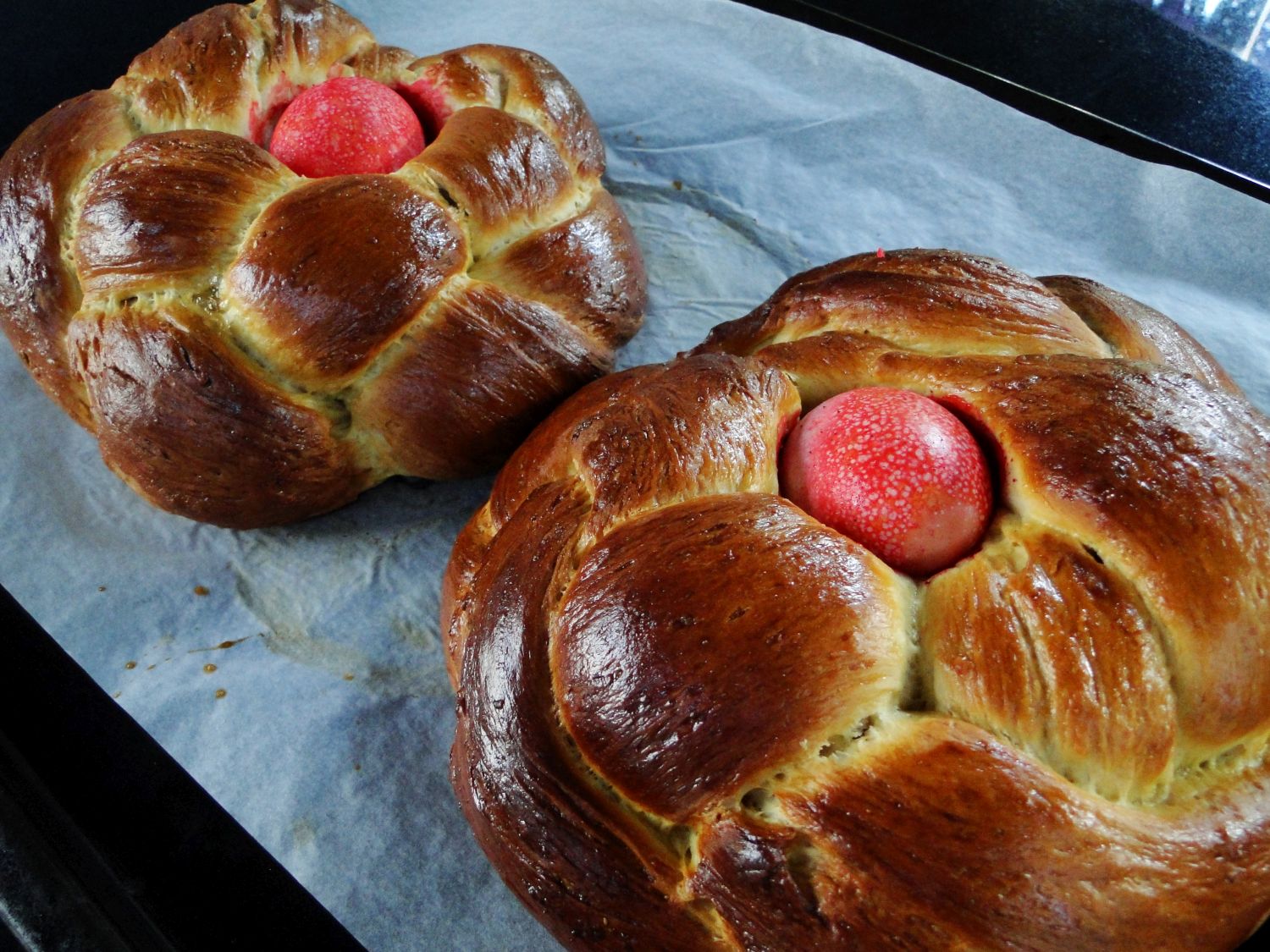Tsoureki (Greek Easter Bread)
While it was Easter Sunday for many Christians a month ago, Orthodox Christians (who follow the Gregorian calendar) celebrate Easter next Sunday.
How many Ukrainians, I wonder, are able to celebrate anything this year?
Inroduction
About this Recipe
By: Sheridan Rogers
Tsoureki is a traditional Easter bread served in Greece to break the Lenten fast. It’s a rich yeast bread flavoured with cinnamon, citrus zest and two distinctive Greek spices: freshly ground mastic (masticha), which is an aromatic spice from Chios island, and aromatic mahlepi (mahleb), a spice made from the ground pips of wild cherries.
When I visited Chios a few years ago, I saw how the mastic is gathered from underneath the trees. The harvest takes place during summer. The area around the mastic tree is cleared and sprinkled with inert calcium carbonate. Every 4–5 days, 5-10 incisions are made in the bark of each tree. The resin flows from the incisions and solidifies on the ground. The pieces of dry mastic are then collected for cleaning.
You can find it at grocery stores specializing in Greek or Middle Eastern products.
While tsoureki is traditionally served at Easter (the three braids symbolising the Holy Trinity), it’s also popular throughout the year as a delicious snack, or as a breakfast, tea or coffee companion.

Ingredients
- plain flour 1kg (8 cups)
- salt 1 teaspoon
- cinnamon 1 teaspoon
- ground mahlepi and mastic (optional) 3g, each
- dry yeast 3 x 7g sachets
- milk 1 1/2 cups, lukewarm
- caster sugar 1 teaspoon
- softened unsalted butter 125g
- olive oil 1 tablespoon
- eggs 4, well-beaten
- sugar 1 cup
- orange 1, zest only
- lemon 1, zest only
- sesame seeds (optional) for sprinkling
- eggs 4, hard-boiled and dyed red
Sift the flour with the salt and cinnamon into a large bowl. Stir through the mahlepi and mastic, if using. Set aside.
Dissolve the yeast in the warm milk – make sure it is lukewarm, not hot. Add 1 teaspoon sugar and ½ cup flour to the mixture. Cover tightly and set aside in a warm place until it begins to bubble and becomes foamy, about 10 – 15 minutes.
In a large saucepan, melt the butter over very low heat. Set aside to cool.
Make a well in the centre of the flour. Pour in the yeast mixture, sugar, orange and lemon zest, olive oil, beaten eggs and cooled butter mixture. Slowly incorporate the flour until the mixture forms a smooth, wet dough. Knead the dough until it is soft and light, not stiff and hard.
Cover the dough with plastic wrap and a tea towel and let rise until it is about double in size, about 2 hours in a warm place (most of the Greek women I have spoken to leave it to rise overnight).
Preheat oven to 200degC (180deg fan-forced). Line four baking trays with baking paper.
Turn the dough out on to a well-floured bench and punch down. Separate the dough into four equal parts. Dust with flour and shape into rounds. Allow to rest for 10 minutes then divide each round into three pieces.
Roll the pieces out into long cords about 40cm length (it’s a good idea to weigh them to ensure they are equal). Plait the three ropes together to form a braided loaf. Join the ends together to form a circle. Place the braids on baking sheets to rise again, covered lightly with a teatowel.
Once the dough has doubled, brush the surface with egg wash and sprinkle with sesame seeds, is using. Gently press a single red egg in the middle of the braid.
Bake for 25 – 30 minutes. Test loaves with a fine metal skewer – when it comes out clean, they are ready.
For the Greek Red Easter Eggs: powdered red dye can be found at Greek cake shops and delicatessens.
Dissolve the packet of dye in 1 cup (250ml) boiling water. Wash the eggs well. Place them in one layer in a pan and cover with water. Add the dissolved dye. Boil the eggs gently for 10 – 15 minutes. Just before removing from heat, add 1 cup white vinegar.
Remove the eggs from the dye with a spoon and place on paper towels to cool. Polish them with a cloth dipped in oil.
Note: You can substitute a flavouring such as cardamom for the Greek spices. Red egg dye is available (usually around Easter time) from Greek and Italian delicatessens. Instructions and quantity required vary from brand to brand.
